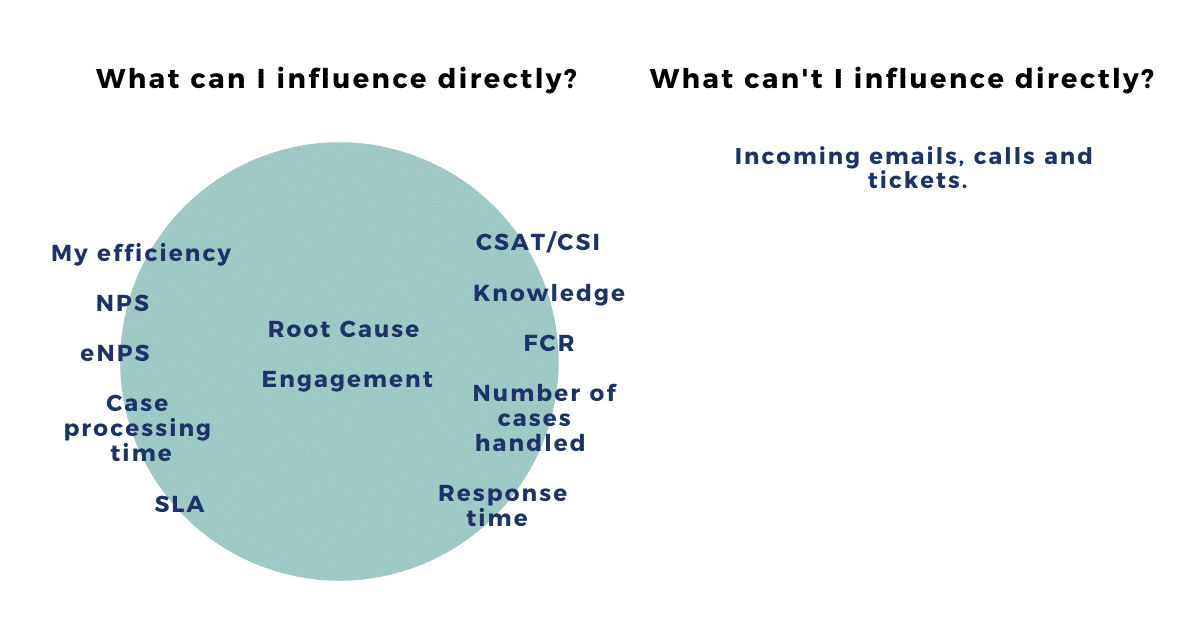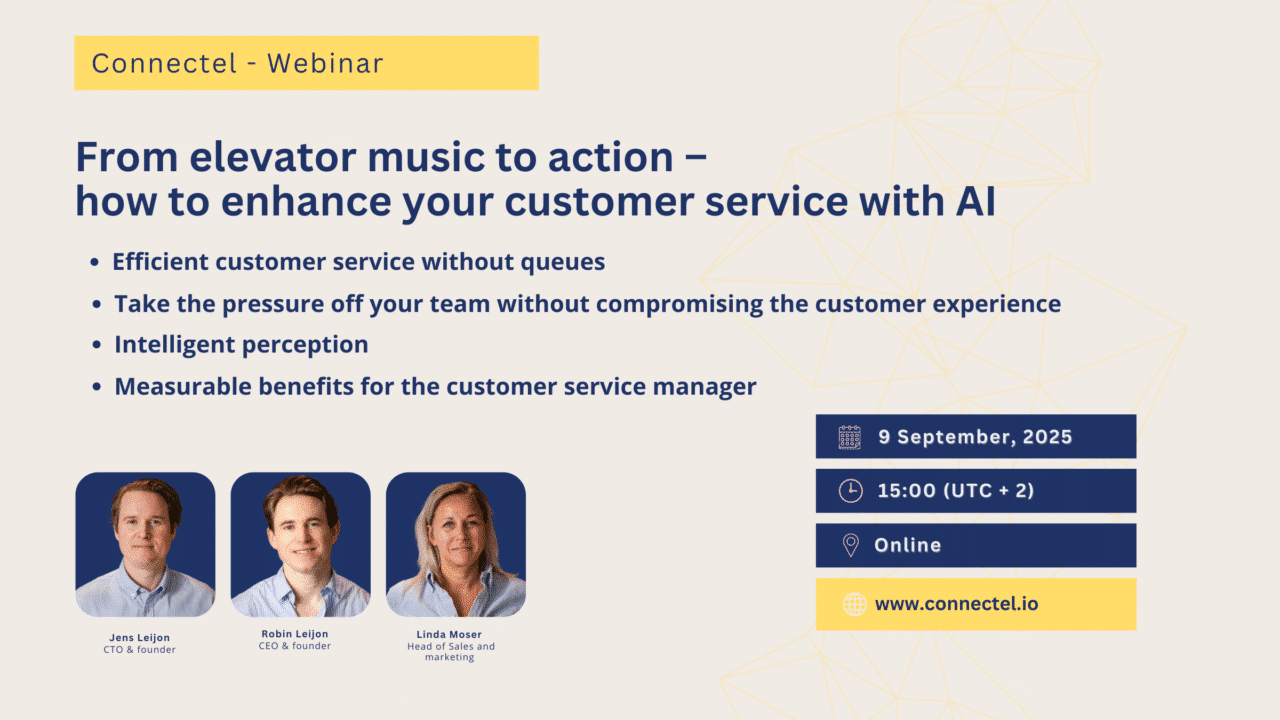

Choosing KPIs for customer service
KPIs for customer service – what to measure and why
Do you have the most satisfied customers in your industry, does your management praise you, does your Customer service have high internal status, are your employees proud and committed? And is your organization continuously evolving and improving? If this is your everyday life – congratulations! Or if this is your vision, please continue reading. Also if you already live your dream, you are still able to make improvements by updating your targets and goals with better KPIs for customer service.
Customer service is a core process of a company, and it is growing. This serves both to attract and retain customers, and trust is built by positive experiences that surpass the customer’s expectations. A smooth customer service enables customers to become proud ambassadors of the company. As well as the opposite, a dysfunctional service function increases the risk of having both dissatisfied customers and employees.
What you measure is what you manage, why?
Let’s start with an example, your regular follow-up morning or weekly meetings, what topics do you bring up? How many calls you managed yesterday and how many you lost? How many emails did you respond to? Nowadays there a numerous amount of data to collect and analyze. With the appropriate tools, you get a better understanding of which KPIs are important to your business and targets. Several customer service organizations only measure what they have measured historically, being most simplistic. Everything that is measured indicates something and has an impact. Everything you do, or don’t do, contributes to the outcome. By analyzing how many calls you receive you can staff properly. But to improve your results, it’s also important to follow up relevant your KPIs for customer service with your employees.
Improved outcome by assigning new KPIs for relevant targets
The customer service staff can usually not influence the number of calls you receive. Large volumes of incoming calls often indicate shortcomings in other departments of the company.
Instead, focus on what employees at the customer service can influence and also engages them. E.g. measure First Call Resolution to find out how many customers that don’t get their cases resolved during their first contact and need to reconnect. This is something employees can make a difference to. On the other hand, the management team may be interested in the number of customer interactions the customer service handles.
The bottom line is, measure everything you want to measure but make sure to follow up the results with the right people.
Download a full KPI-guide here:
Improve customer service employee commitment by using KPIs they can influence
Commitment is increasing when measured on activities that can be influenced directly in the customer contact. In the picture below, KPIs inside or at the edge of the circle could be measured daily. If you do not feedback on these on a regular basis, there is a risk that the employee’s commitment will decline. Also if there is a delay in presenting the results, it is no longer as motivating.

Inside the circle, there are things employees can influence themselves. At the edge are KPIs that employees can influence to some extent or proactively work on to improve. What is outside the circle, employees can usually not influence. Employee engagement increases when measured on KPIs they can actually influence. And increasing engagement often leads to increased customer satisfaction.
The KPIs you should measure
In the illustration above, we have listed some of the most common KPIs for customer service. Some are located at the border of what the employee can or cannot directly influence. This can be further analyzed, both with the employees, in teams and with other company departments. More details are available in the KPI White Paper.
There are several KPIs that employees can not influence, yet of management team interest. It is important to define KPI stakeholders. A well-working customer service is today a hygiene factor for business success. This is where you build and maintain customer relations and also generate new sales.
What kind of service do the customers want?
That’s really what it’s all about, to make customers as happy as possible at the right cost. Customer service works every day to handle customer matters by taking phone calls, responding to emails and communicating with customers in other channels. Customer service tasks are not only to solve problems but also to turn the customer’s experience into something positive and when possible also sell more. Customer service gives companies a second option to avoid losing a customer, to avoid negative reviews and bad publicity. Customer service holds lots of valuable data and information about the customers, what they think and want. This makes customer service a core company function and often the key to long-term success.
Surveys show that 72% of customers are much more likely to shop from companies that are known for excellent Customer service. Maybe you consider your customers being fully satisfied with your customer service. But do you have any proof of this or is it your gut feeling? You might think there seems to be some staff that is more efficient and handles more cases than others? Does the new employee seem more committed than those who have been with the company from the start? If your gut feeling is not backed up by numbers there is not much to present to management or employees. And what new actions could then be taken?
What the customers want today? Below are Top 3 parameters for several different industries according to Brilliant’s survey:
1. The overall experience
2. Simplicity
3. Commitment and Response times
Several KPIs can be linked to the various parameters, thus it is important to only include and manage those that are relevant to your business. Customer service affects much of the overall experience, including both simplicity and commitment. As the customer service employee has an immediate impact on customer experience by how they communicate with and treats the customer. By tone, words and sentences used, how well you listen, in what sequence information is given, how well you adapt to the customer’s situation.
Define what you want to explore. E.g. if you lose many customers because of long call queues, call duration time would be an important parameter. On the other hand, if you instead want to find out how committed your staff is perceived by the customers, call length is not of interest. Then you should measure customer satisfaction (CSAT).
The benefits of measuring and managing KPIs
What are the benefits of KPIs? These support you from only believing to actually knowing. That’s the benefit of measuring. Once you know how your team is doing, you can take relevant actions to also improve the outcome. So, what is measured also needs to be managed. Follow-up and feedback are something several team leaders need to improve. Without follow up there will not be any improved results. So please ensure to both measure and follow up the relevant KPIs in the right forums and with the right people.
Make it easy for employees and management to understand. By defining which KPIs are important to customer service, what purposes they have and why. Start by only measuring the KPIs you need to get the results you want. By analyzing KPIs regularly, improvements will become visible to everyone. This includes employee productivity and customer satisfaction, which all impacts the bottom line of the company.
A challenge today is that there is so much data available, which makes it difficult to find, compare and analyze in a simple way. It might be hard to find the data you want, to compare different channels and also to present it in an understandable way. Time is spent measuring KPIs that do not support the targeted impact but instead creating stress for the employees. To get more satisfied customers, employees and management, you need to measure and follow up on what takes the organization closer to the targeted results. You could measure pretty much anything at a customer service organization today, however, make sure to focus on topics that are important today.
So what should you measure to get more satisfied customers, improved employee commitment and present to your company’s management? Please have a look at the White Paper below to get started or to enhance your existing methods for a world-class Customer service.
Download a full KPI-guide here:
Have a look at our KPI measuring tool


